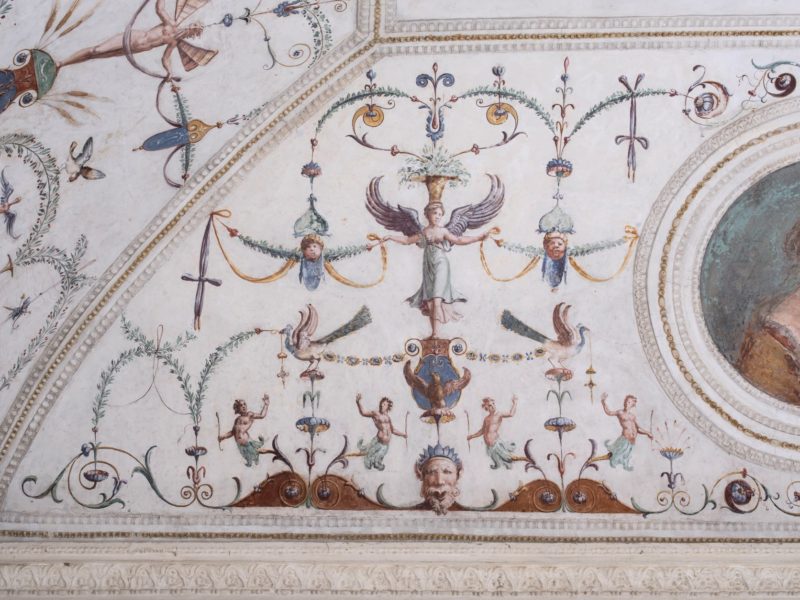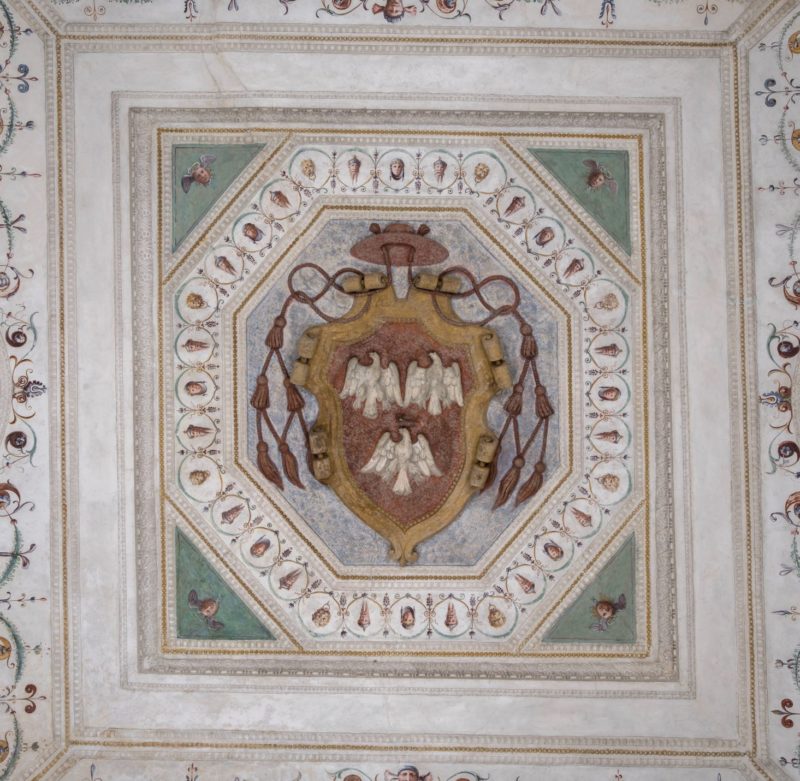The three side rooms of the villa have frescoed groin-vaulted ceilings, decorated with elaborate grotesque frescoes depicting characters from mythology and hybrid fantasy figures.
The artists of Raphael’s school found their inspiration for grotesque paintings in “caves” (grotta in Italian, hence the name of the style), or ancient buildings buried underground. Emperor Nero’s Domus Aurea (golden house) was a notable example discovered in this period.
Among the mythological figures, it is easy to pick out Baldassarre Turini’s greyhound and the Medici lion.
Three famous love stories from Antiquity are depicted in small rectangles on the ceiling of the Institute office: Cupid and Psyche (west and south sides), Bacchus and Ariadne (north side, with Bacchus symbolized by a dolphin and an elephant), and Orpheus and Eurydice (east side). The frescoes preserved in the Vatican embassy office are more difficult to interpret. It seems that some of them are purely decorative and have no symbolic meaning. The western, northern and probably also the eastern walls of the room depict scenes related to the legend of Jason and the Golden Fleece. On the north (salone) side is Jason ploughing with Vulcan’s oxen. The figure on horseback next to Raphael’s portrait is (probably) Marcus Curtius, who, to save his country, plunged into the depths of the earth in the middle of the Forum Romanum.

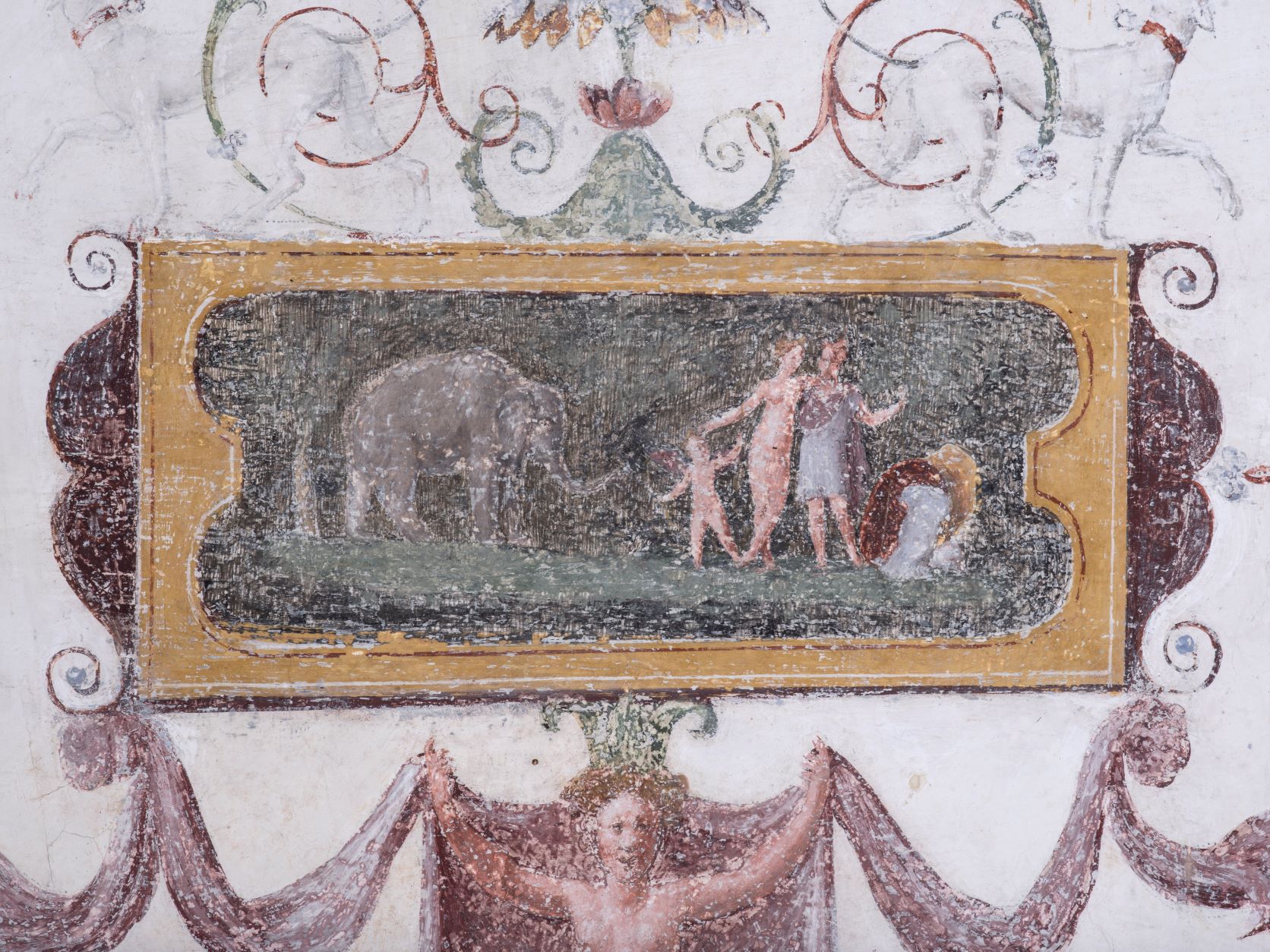
The circular centrepieces in the director’s study are copies of Raphael’s famous female figures. In the north vault is a stylized version of a painting in Palazzo Pitti in Florence, “La Velata” (The Veiled Woman). The vault on the salone side contains Raphael’s beloved “La Fornarina” who, legend has it, was the daughter of a Trastavere baker.
In the vault facing the vestibule is “La Gravida” – also based on the original in Florence. Above the west window is one of the famous sibyls from the paintings in the church of Santa Maria della Pace. Raphael’s influence can also be seen in the female figures in the office, although not quite as clearly as in the director’s study. The beautiful portrait in the medallion on the north (vestibule) side may be based on a Domenico Ghirlandaio’s painting of Lucrezia Tornabuoni. (The original is in the Cappella Tornabuoni in the church of Santa Maria Novella, Florence.)
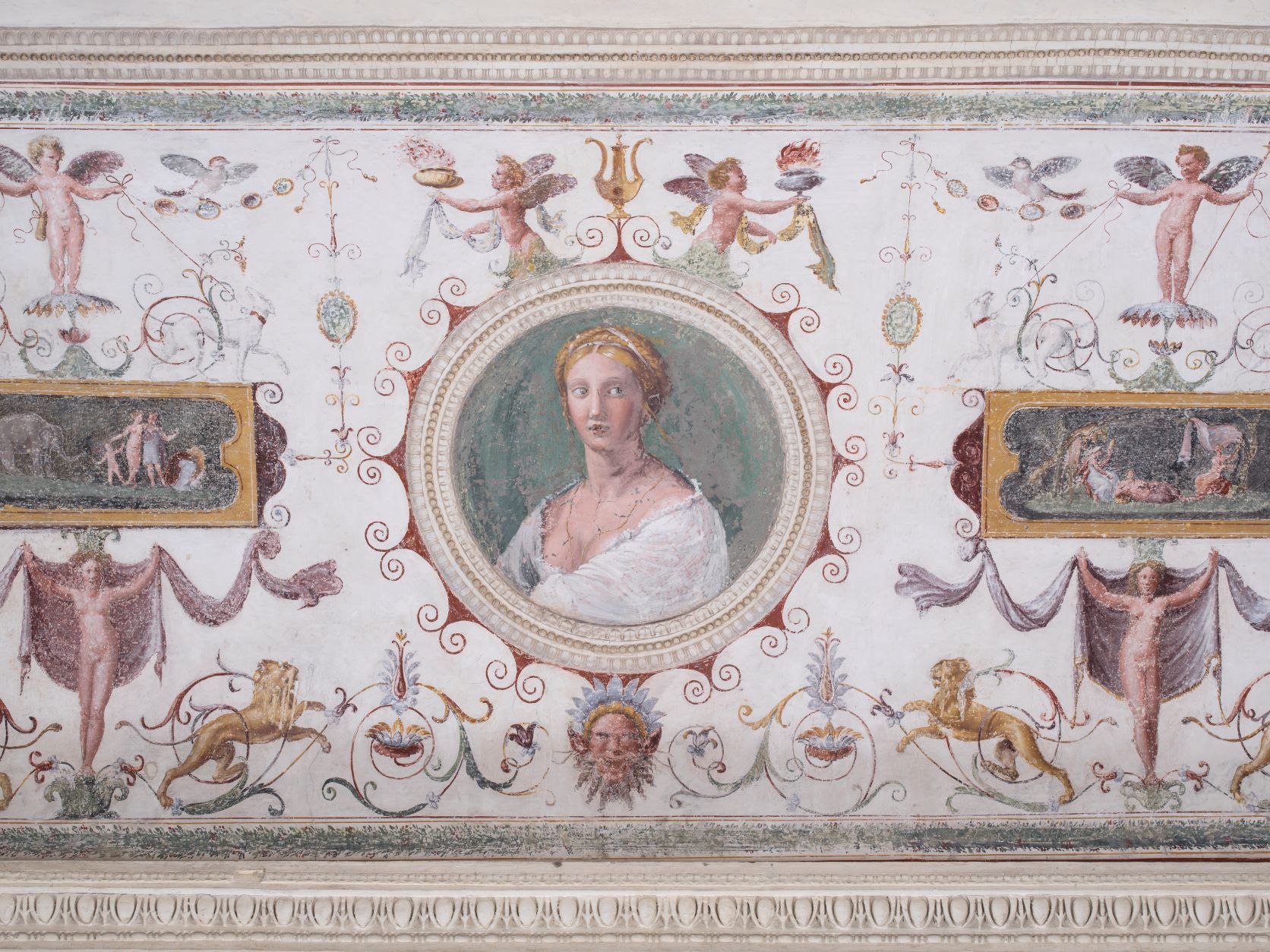

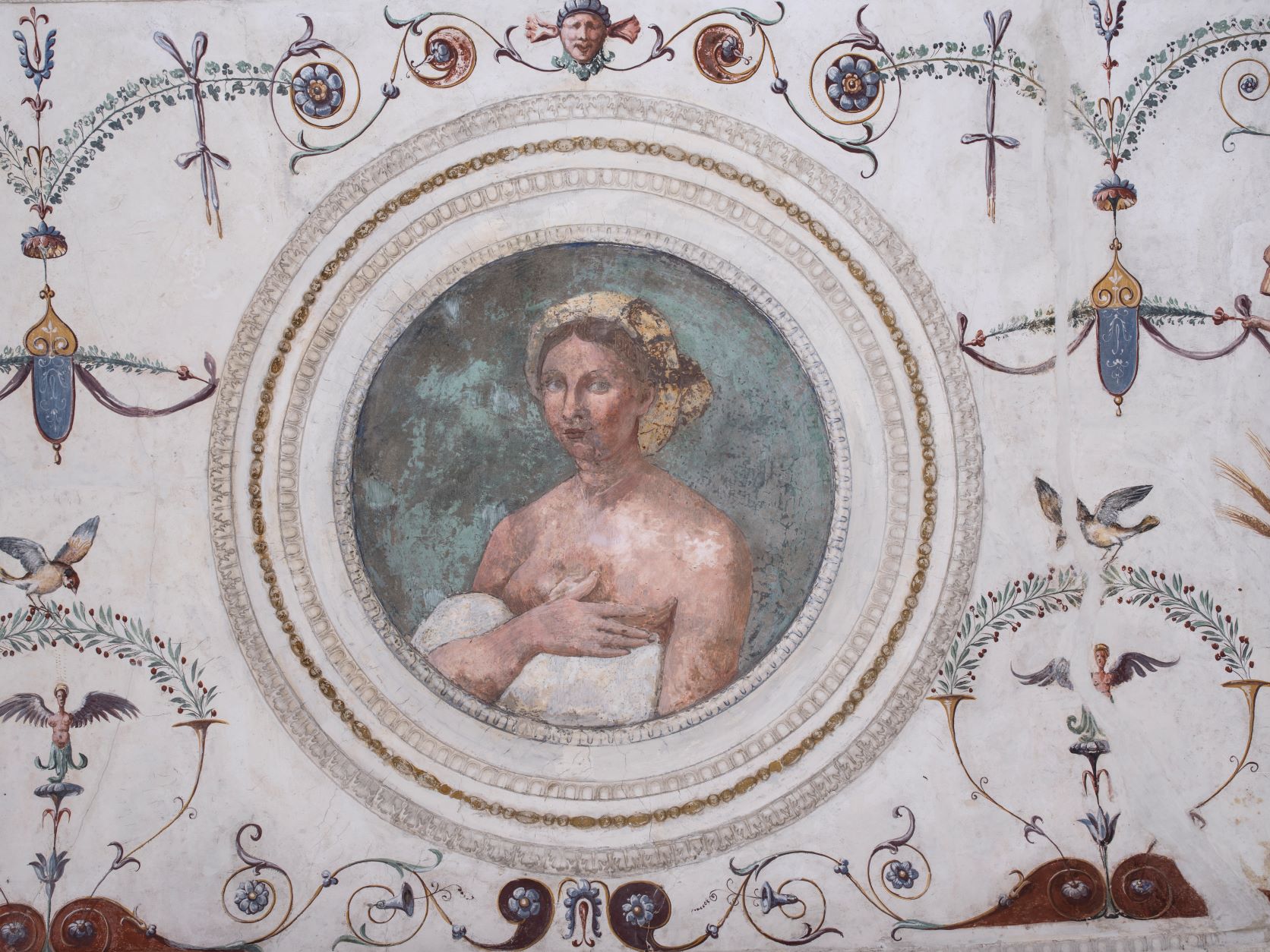
The portraits in the Vatican embassy office depict famous men in the Florentine tradition: Petrarch, Dante, the Medici court poet Poliziano and Raphael himself, whose image is copied from the “Double Portrait” (Doppio ritratto) in the Louvre.
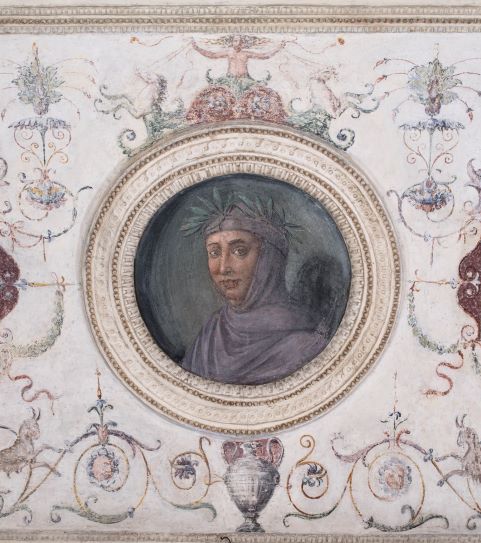
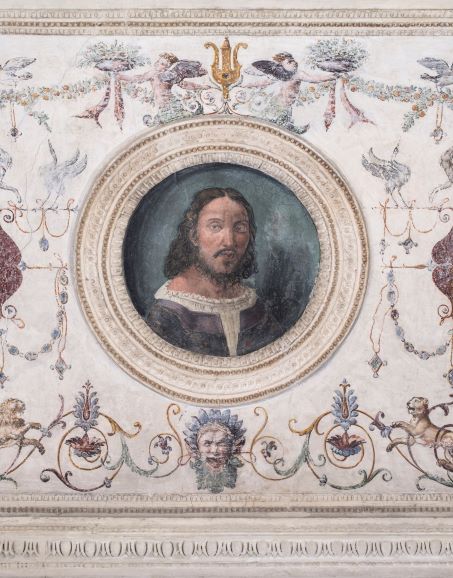
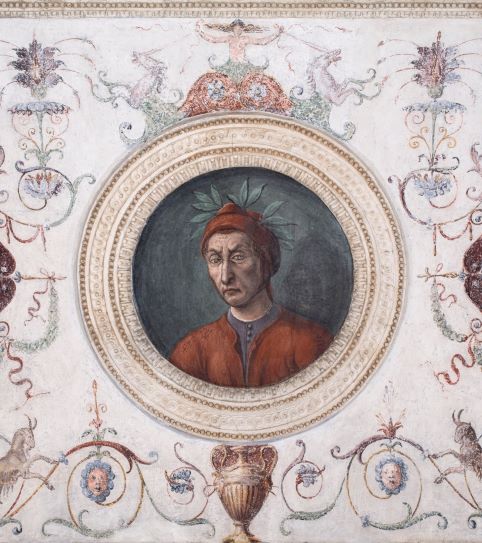
Henrik Lilius states that the subject of the frescoes in the side rooms is taken from Boccaccio’s Amorosa Visione. The story tells of a young poet who, guided by a beautiful maiden, visits an imaginary castle of art. There he sees eight figures of women smiling gently (like the eight women in the side rooms of Villa Lante), portraits of Dante and other philosophers and poets, and scenes from mythology. Although the images in Villa Lante do not exactly correspond to Boccaccio’s story, there are many similarities.
In all the side rooms, the coat of arms of the Bishop of Todi, Marcello Lante, was added to the centre of the ceiling in the early seventeenth century, depicting the symbol of the Lante family, three white eagles. (The coat of arms in the Vatican embassy room has been destroyed.)
The ceiling paintings were badly damaged in the nineteenth century, when the religious sisters who bought the villa covered up and even destroyed images they considered immodest. The ceiling paintings in the Vatican embassy and Institute offices were only uncovered during the 1974–1975 restoration.

